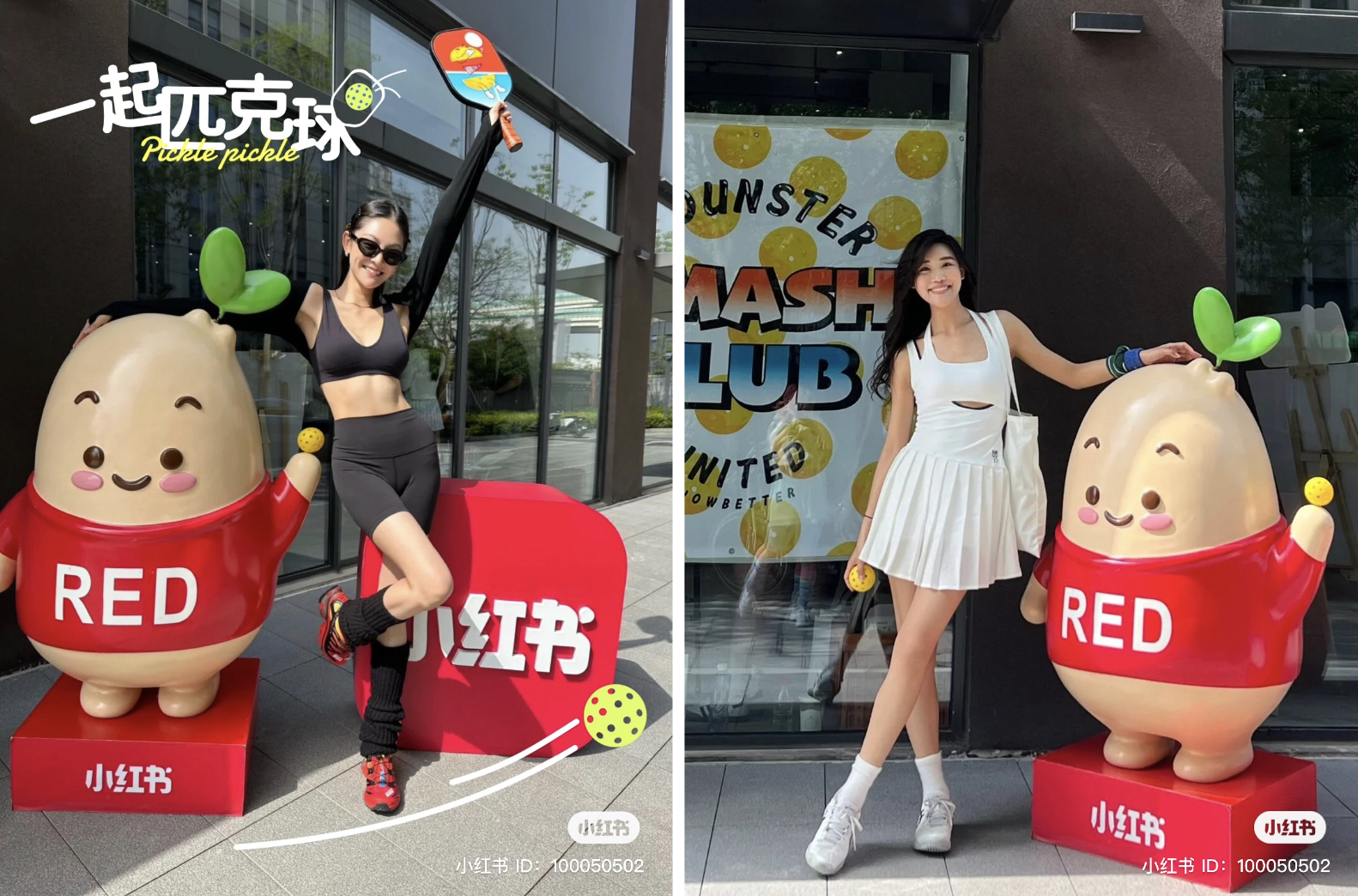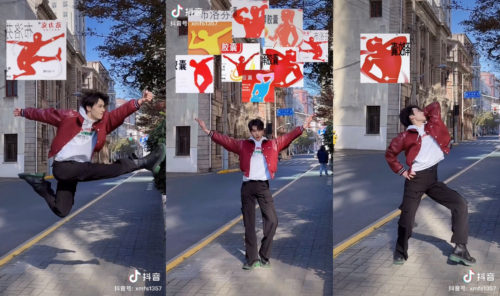‘You get to sweat in style’: Pickleball craze hits China
It took a couple more years than in other places, but pickleball has finally made it big in China, fueled by social media.
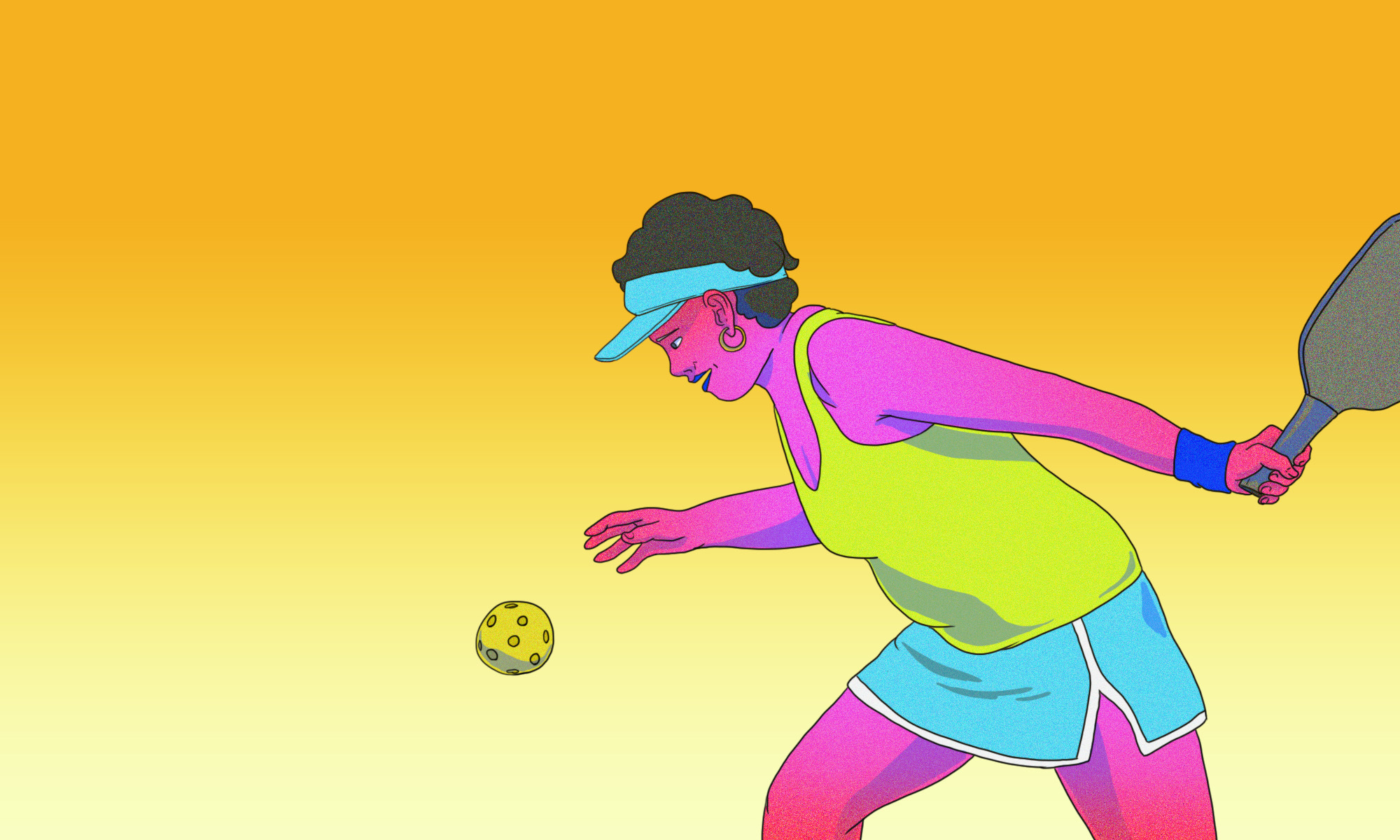
Zoe Qin, a 29-year-old user experience designer in Hangzhou, used to start her Saturdays around noon at a local board game café and stay until midnight, playing rounds of script-based murder mystery games while ordering takeouts and melting into the couch like — she half-joked — “a total loser.”
Since April, however, she has spent her weekends differently. She hardly goes to the café anymore and now follows a healthy diet.
“Part of my life changed dramatically,” she told The China Project. The reason for this drastic shift? About six months ago, a colleague invited Qin along to a beginner pickleball class at a tennis center. Qin hadn’t participated in athletic activities “for an embarrassingly long period of time” but always enjoyed watching racket sports like tennis and Ping-Pong. She thought she’d give it a go.
Soon after the first session, Qin was going to the tennis center three or four times a week. Before she knew it, pickleball had become something she’s “completely obsessed with,” Qin said.
“It’s not only the physical aspect of it. Hearing the sound of the ball going back and forth hitting paddles is inexplicably soothing and satisfying,” she explained. “I also love how it brings people together.”
Belatedly joining the global phenomenon
Qin is hardly alone in her newfound obsession. For the past few years, pickleball — a simple, mildly paced sport resembling tennis but played with a plastic, Wiffle-like ball and solid paddle — has been enjoying a boom in popularity, particularly in the U.S. and certain European countries.
In 2021, the Economist reported that as Americans looked for new ways to stay active during the COVID-19 pandemic, pickleball had gone from a backyard game to the fastest-growing sport in the country, attracting legions of fans, including Hollywood royalty like Leonardo DiCaprio and professional athletes like quarterback Russell Wilson. Last year, the New York Times asked, “Why is pickleball so popular?” writing that “everyone and their mother seems to be playing.” According to a report released in March by the Association of Pickleball Professionals, 48.3 million adult Americans — nearly 19% of the total adult population — have joined the frenzy.
But it wasn’t until recent months that pickleball took off in China, where interest in outdoor activities skyrocketed during the pandemic and remained after the government lifted most COVID restrictions late last year. Previously, cycling, camping, and Ultimate Frisbee all had their moments. This summer, pickleball is standing out as a seasonal sensation embraced by trend-hoppers.
“A few months back at friend gatherings, I used to just absent-mindedly bore everybody by talking about pickleball,” Jessica Yu, who went to college in the U.S. and returned to Chongqing last year, told The China Project. “But now, you mention that and most people would tell me they’ve heard of it. Some would even ask me to recommend teachers and venues,” the 23-year-old data analyst added.
Invented in 1965 by a group of American dads wanting to entertain their families, pickleball can be best described as a mash-up of tennis, badminton, and Ping-Pong. It’s played as either a singles or doubles game, on a hard surface roughly a third the size of a tennis court. There are contradictory theories regarding the exact origin of the sport’s name, but the most common explanation is that it was named after Pickles, a pet dog owned by one of the sport’s founders.
Julie Wang, a 32-year-old Shanghai native who works as a social-media strategist at a startup, has been a “veteran gym quitter,” she told The China Project. Over the years, she has developed a pattern of signing up for a gym as a New Year’s resolution, eagerly following up by exercising every day for a few weeks, and eventually calling it quits. “I’ve come to accept that I simply lack the mental drive to hit the gym consistently. Exercise is boring and repetitive for me,” Wang said.
Like Qin from Hangzhou, Wang attended her first pickleball class with a co-worker and was soon hooked — thanks in large part to “how easy it is to pick up the basics of the game,” she said. Two months after her first encounter with pickleball in March, Wang bought her own paddle. “Unlike going to the gym, playing pickleball doesn’t feel like a chore. It’s actually fun and enjoyable, and that’s what matters the most to me,” she said.
A social media fad is born
Beyond word-of-mouth among friends, pickleball — like many niche turned mainstream sports before it — found most of its Chinese fans on social media, through glowing reviews from lifestyle influencers and sleekly designed campaigns by sports clubs.
On Xiaohongshu, the preferred destination for young Chinese looking for product recommendations and activity ideas, a search for pickleball’s Chinese name, pǐkèqiú 匹克球, now yields thousands of posts, with many of them uploaded in response to a month-long campaign launched by the app in April, where Xiaohongshu users were incentivized to share their pickleball experience in exchange for content amplification and other tangible rewards. So far, “Let’s play pickleball together” (#一起匹克球#), the official hashtag of the campaign, has racked up over 5 million views.
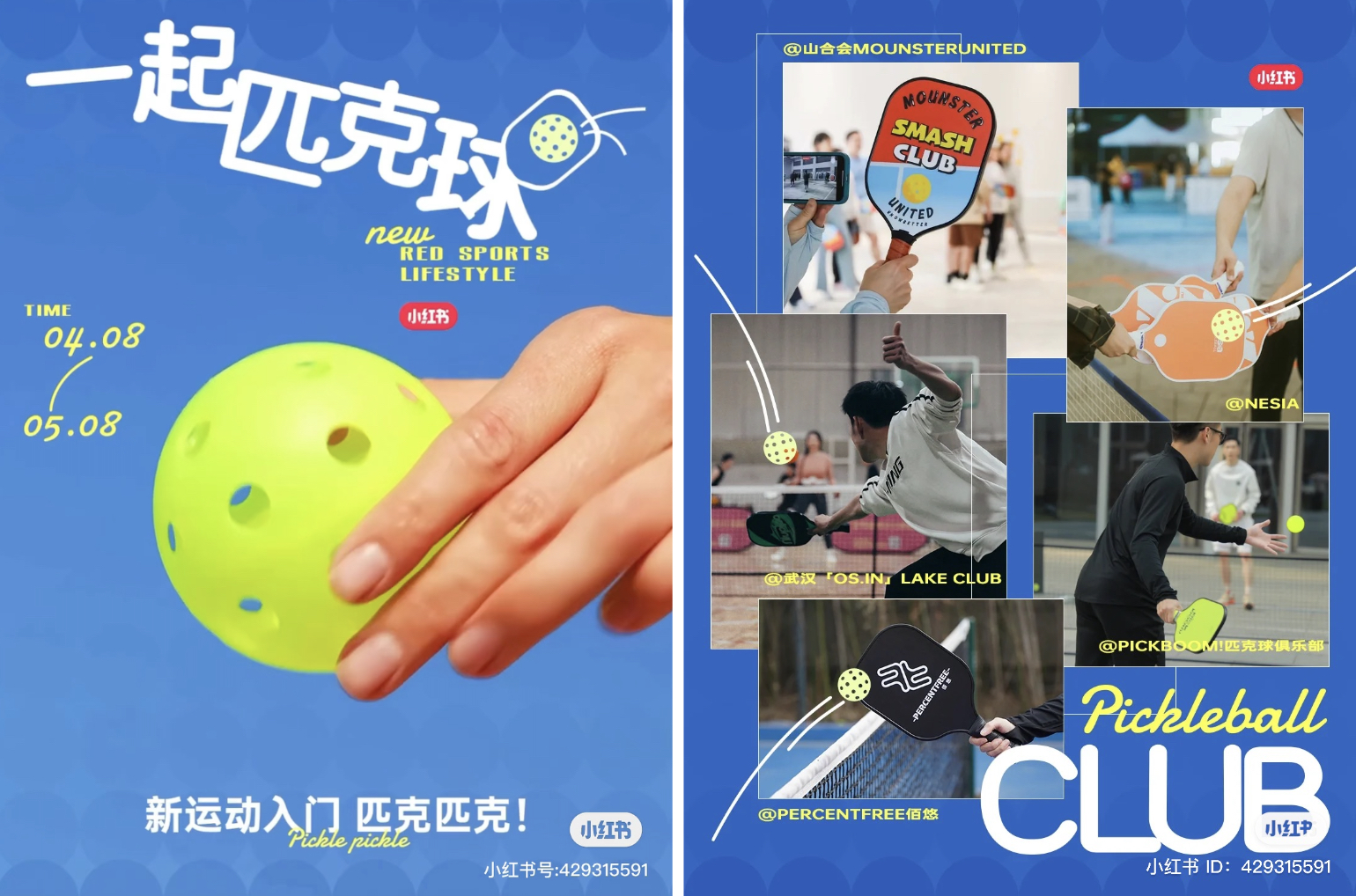
While pickleball is an inclusive sport that welcomes everyone, regardless of age, gender, or skill level, in China, it appears to hold particular allure for young women. Having dabbled in “virtually every trendy sport that every young individual in China is trying nowadays,” Yu noticed that the pickleball games she played saw the highest number of female participation. “Maybe it’s because some adult men think pickleball is not challenging enough,” she said, recalling that a male friend once referred to pickleball as “tennis for the old” and said it’s not “a real sport.”
The impression is not entirely wrong, but it’s not entirely right, either. Mildly paced and low stakes, pickleball has traditionally had a reputation for being a pastime that American seniors take up after retirement. While that is true, the demographic partaking in the sport has expanded to include young players since the pandemic-fueled boom.
In China, age ratios of amateur paddlers appear to be skewed heavily toward teenagers and young adults, according to Yu. “I’ve actually seen kids a lot on the court, which makes sense to me. Compared with tennis, pickleball is easier on the body and is more of a family activity,” she said. “But it’s rare to see senior players, probably because they are not active users of social media and that’s where people learn about pickleball.”
And it’s definitely a “real” — or, in other words, competitive — sport. In the U.S., professional pickleball has been expanding and is now a big business replete with competing pro tours, escalating prize money, and celebrity investors like Tom Brady and LeBron James, who have purchased their own teams in Major League Pickleball, which boasts 24 teams from the 2023 season.
“Tenniscore”
Although the sport is played mostly for recreational purposes in China at the moment, Yu mentioned that matches could get pretty intense among pickleball fanatics. “Some people take it very seriously, almost too seriously,” she said. “It’s not my style. When I play, I just want to get a modest workout out of it.”
For Qin, pickleball’s appeal goes beyond exercising her body. Unlike regular gyms or more established sports, Qin thinks that because of pickleball’s low barrier to entry, it has a strong social element, attracting people from all walks of life and opening up opportunities for her to mingle with strangers outside her typical social circle.
Playing pickleball also provides the additional perk of getting to dress stylishly while breaking a sweat, according to Qin. As tennis’s more inclusive cousin, pickleball shares a specific aesthetic that has become known in the fashion crowd as “tenniscore.” Characterized by pleated mini skirts, cropped polos, and sport-friendly dresses, the style — a marriage between modern athleisure and the retro country club vibe — is in line with fashion’s current throwback obsession.
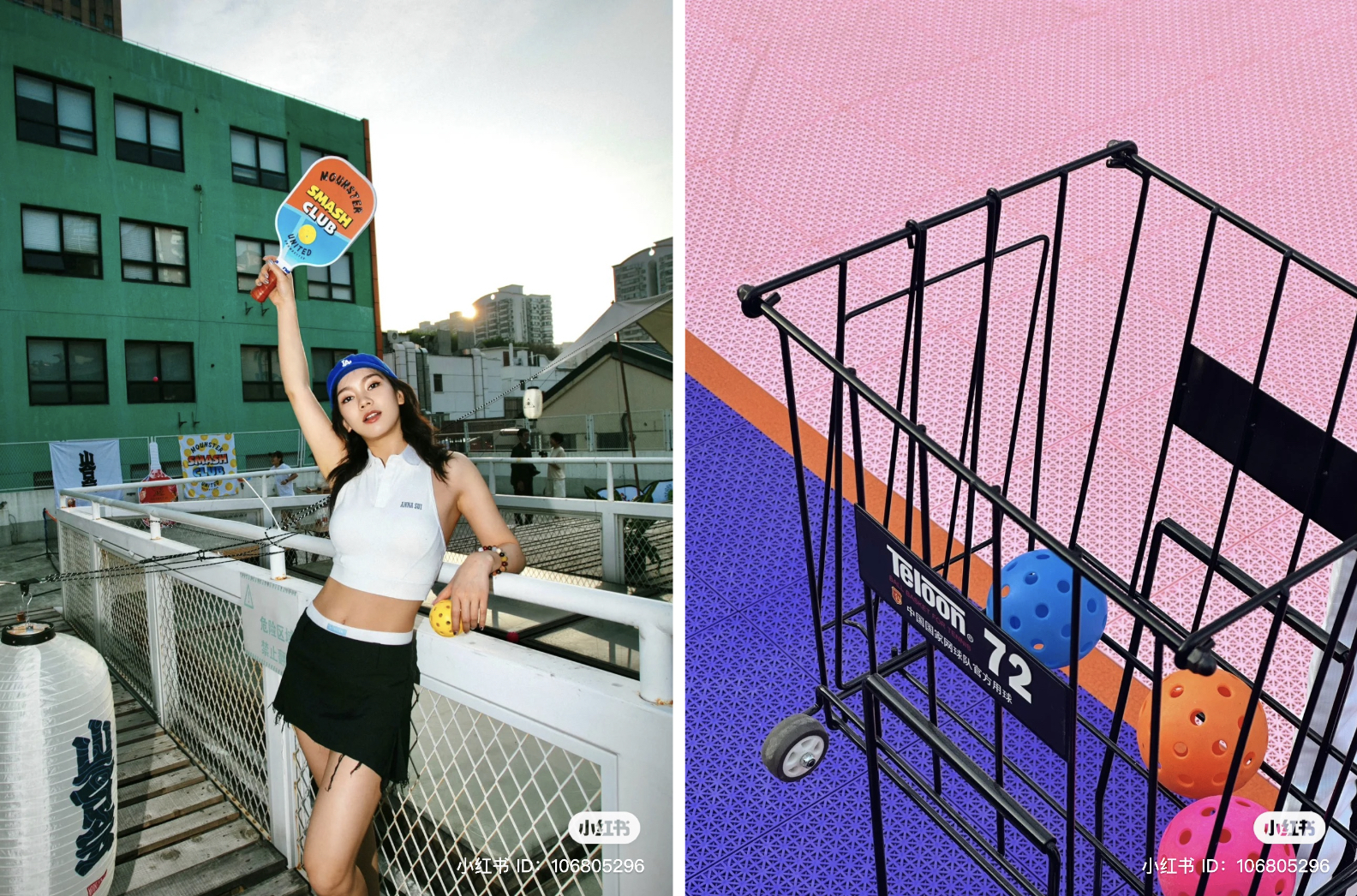

Yu, who calls herself a “fashion girlie,” agreed. “This might sound superficial, especially to people who love bashing female influencers for getting into sports just to show off their styles and figures,” Yu said, referring to the pushback over influencers flocking to Ultimate Frisbee in droves last year, turning a once-niche but serious sport into a prop for social media posts.
“There’s this negative stereotype on the Chinese internet that young women who are into sports all have exterior motives. And that is the exact antithesis of what pickleball stands for, which is an inclusive and welcoming environment,” Yu said. “I don’t care what people think. When I play pickleball, I get to wear cute clothes and make some friends along the way. What’s not to love about it?”
